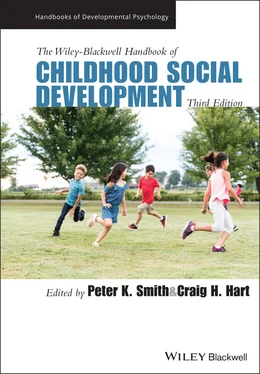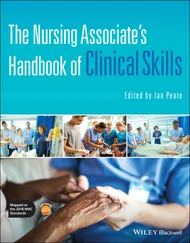67 Fox, N. A., Nelson, C. A., & Zeanah, C. H. (2013). The effects of early severe psychological deprivation on children’s cognitive and social development: Lessons from the Bucharest Early Intervention Project. In N. S. Landale, S. M. McHale, & A. Booth (Eds.), Families and child health (pp. 33–41). New York: Springer Science.
68 Fuligni, A. J., & Tisak, K. M. (2014). Developmental flexibility in the age of globalization: Autonomy and identity development among immigrant adolescents. Annual Review of Psychology, 66, 411–431.
69 Gazelle, H., & Ladd, G. W. (2003). Anxious solitude and peer exclusion: A diathesis‐stress model of internalizing trajectories in childhood. Child Development, 74, 257–278.
70 Geronimus, A. T. (2003). Damned if you do: culture, identity, privilege, and teenage childbearing in the United States. Social Science & Medicine, 57, 881–893.
71 Gifford‐Smith, M. E., & Rabiner, D. L. (2004). Social information processing and children's social adjustment. In J. B. Kupersmidt & K. A. Dodge (Eds.), Children's peer relations: from development to intervention (pp. 61–79). American Psychological Association.
72 Golm, D., Maughan, B., Barker, E. D., Hill, J., Kennedy, M., Knights, N., Kreppner, J., Kumsta, R., Schlotz, W., Rutter, M., & Sonuga‐Barke, E. J. S. (2020). Why does childhood deprivation increase the risk for depression and anxiety in adulthood? A developmental cascade model. Journal of Child Psychology and Psychiatry, 61, 1043–1053.
73 Greene, B. (1993, April 28). I was a Curtis Taylor too. Chicago Tribune.
74 Groh, A. M., Fearon, R. M. P., van IJzendoorn, M. H., Bakermans‐Kranenburg, M. J., & Roisman, G. I. (2017). Attachment in the early life course: Meta‐analytic evidence for its role in socioemotional development. Child Development Perspectives, 11, 70–76.
75 Grotevant, H. D., & McDermott, J. M. (2014). Adoption: Biological and social processes linked to adaptation. Annual Review of Psychology, 65, 235–265.
76 Hamaker, E. L., Kuiper, R. M., & Grasman, R P. (2015). A critique of the cross‐lag panel model. Psychological Methods, 20, 102–116.
77 Hammen, C. K. (2009). Children of depressed parents. In I. H. Gotlib & C. K. Hammen (Eds.), Handbook of depression (2nd ed.). Guilford Press.
78 Hardy, S. A., & Carlo, G. (2005). Religiosity and prosocial behaviours in adolescence: The mediating role of prosocial values. Journal of Moral Education, 34(2), 231–249.
79 Harris, J. R. (1995). Where is the child's environment? A group socialization theory of development. Psychological Review, 102(3), 458–489.
80 Harris, P. L. (2006). Social cognition. In W. Damon & R. M. Lerner (Series Eds.), and D. Kuhn & R. Siegler (Vol. Eds.), Handbook of child psychology: Vol. 2. Cognition, perception, and language (6th ed., pp. 811–858). Wiley.
81 Hart, C. H., Newell, L. D., & Olsen, S. F. (2003). Parenting skills and social/communicative competence in childhood. In J. O. Greene & B. R., Burleson (Eds.), Handbook of communication and social interaction skills (pp. 753–800). Erlbaum.
82 Harter, S. (2012). The construction of the self: Developmental and sociocultural foundations (2nd ed.). Guilford Press.
83 Hodges, E. V. E., Boivin, M., Vitaro, F., & Bukowski, W. M. (1999). The power of friendship: Protection against an escalating cycle of peer victimization. Developmental Psychology, 35(1), 94–101.
84 Huitsing, G., & Veenstra, R. (2012). Bullying in classrooms: Participant roles from a social network perspective. Aggressive Behavior, 38, 494–509.
85 Ismail, A. A. (2019). Immigrant children, educational performance and public policy: A capability approach. Journal of International Migration & Integration, 20(3) 717–34.
86 Jiménez‐Barbero, J. A., Ruiz‐Hernández, J. A., Llor‐Zaragoza, L., Pérez‐Garćia, M., & Llor‐Esteban, B. (2016). Effectiveness of anti‐bullying school programs: A meta‐analysis. Children and Youth Services Review, 61, 165–175.
87 Jöreskog, K. G., & Sörbom, D. (1979). Advances in factor analysis and structural equation models. University Press of America.
88 Kagan, J. (1997). Temperament and the reactions to unfamiliarity. Child Development, 68, 139–143.
89 Kasen, S., Cohen, P., Skodol, A. E., Johnson, J. G., Smailes, E., & Brook, J. S. (2001). Childhood depression and adult personality disorder: Alternative pathways of continuity. Archives of General Psychiatry, 58(3), 231–236.
90 Kagan, J., & Snidman, N. (2007). Temperament and biology. In D. Coch, K. W. Fischer, & G. Dawson, Human behavior, learning, and the developing brain (pp. 219–246). Guilford Press.
91 Kawabata, Y., & Crick, N. R. (2008). The role of cross‐racial/ethnic friendships in social adjustment. Developmental Psychology, 44(4), 1177–1183.
92 Kelley, M., Power, T. G., & Wimbush, D. (1992). Determinants of disciplinary practices in low‐income black mothers. Child Development, 63, 573–582.
93 Kennedy, M., Kreppner, J., Knights, N., Kumsta, R., Maughan, B., Golm, D., Rutter, M., Schlotz, W., & Sonuga‐Barke, E. J. S. (2016). Early severe institutional deprivation is associated with a persistent variant of adult attention‐deficit/hyperactivity disorder. Journal of Child Psychology and Psychiatry, 57(10), 1113–1125.
94 Kenny, D. A., & Harackiewicz, J. M. (1979). Cross‐lagged panel correlation: Practice and promise. Journal of Applied Psychology, 64, 372.
95 Kochanska, G., Gross, J. N., Lin, M‐H., & Nichols, K. E. (2002). Guilt in young children: Development, determinants, and relations with a broader system of standards. Child Development, 73, 461–482.
96 Kochanska, G., & Kim, S. (2013). Difficult temperament moderates links between maternal responsiveness and children’s compliance and behavior problems in low‐income families. Journal of Child Psychology and Psychiatry, 54, 323–332.
97 Kochanska, G., Koenig, J. L., Barry, R. A., Kim, S., & Yoon, J. E. (2010). Children's conscience during toddler and preschool years, moral self, and a competent, adaptive developmental trajectory. Developmental Psychology, 46, 1320–1332.
98 Kochenderfer‐Ladd, B., & Wardrop, J. (2001). Chronicity and instability in children’s peer victimization experiences as predictors of loneliness and social satisfaction trajectories. Child Development, 72, 134–151.
99 Kohlberg, L. (1969). Stage and sequence: The cognitive‐developmental approach to socialization. In D. A. Goslin (Ed.), Handbook of socialization theory and research (pp. 347–480). Rand McNally.
100 Kovacs, D. M., Parker, J. G., & Hoffman, L. W. (1996). Behavioral, affective, and social correlates of involvement in cross‐sex friendship in elementary school. Child Development, 67, 2269–2286.
101 Ladd, G. W. (2003). Probing the adaptive significance of children’s behavior and relationships in the school context: A child by environment perspective. In R. Kail (Ed.), Advances in child behavior and development (Vol. 31, pp. 43–104). Wiley.
102 Ladd, G. W. (2005). Children’s peer relationships and social competence: A century of progress. Yale University Press.
103 Ladd, G. W. (2006). Peer rejection, aggressive or withdrawn behavior, and psychological maladjustment from ages 5 to 12: An examination of four predictive models. Child Development, 77, 822–846.
104 Ladd, G. W., & Cairns, E. (1996). Children: Ethnic and political violence. Child Development, 67, 14–18.
105 Ladd, G. W., & Kochenderfer‐Ladd, B. (2019). Parents and children’s peer relationships. In M. H. Bornstein (Ed.), Handbook of parenting. Vol. 5. The practice of parenting (3rd ed., pp. 278–316). Routledge.
106 Lagerspetz, K. M. J., Bjorkqvist, K., & Peltonen, T. (1988). Is indirect aggression typical of females? Gender differences in aggressiveness in 11‐ to 12‐year‐old children. Aggressive Behavior, 14, 403–414.
Читать дальше












